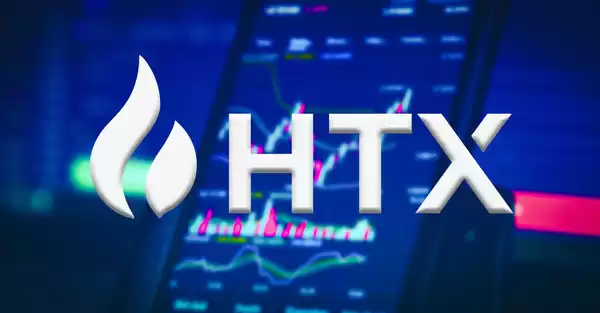-
 bitcoin
bitcoin $123963.239194 USD
1.37% -
 ethereum
ethereum $4529.082464 USD
1.07% -
 xrp
xrp $2.983640 USD
0.71% -
 tether
tether $1.000287 USD
0.02% -
 bnb
bnb $1179.874393 USD
2.99% -
 solana
solana $230.633678 USD
1.55% -
 usd-coin
usd-coin $0.999835 USD
0.03% -
 dogecoin
dogecoin $0.254240 USD
1.34% -
 tron
tron $0.341176 USD
0.15% -
 cardano
cardano $0.842285 USD
0.52% -
 hyperliquid
hyperliquid $48.537896 USD
-0.86% -
 chainlink
chainlink $21.863092 USD
-0.84% -
 ethena-usde
ethena-usde $0.999743 USD
-0.07% -
 sui
sui $3.579561 USD
-0.18% -
 stellar
stellar $0.403418 USD
2.67%
How to make money from Huobi contract trading
By understanding the basics of contract trading on Huobi, developing a disciplined approach, and employing advanced strategies, traders can potentially increase their chances of profiting from the cryptocurrency market.
Nov 10, 2024 at 06:52 pm

Contract trading on Huobi is a popular way to potentially profit from the cryptocurrency market. By understanding the basics of contract trading and following a disciplined approach, you can increase your chances of success. Here's a comprehensive guide on how to get started with Huobi contract trading:
1. Understand Contract Trading:- Contract trading involves buying or selling contracts that represent the underlying asset, such as Bitcoin or Ethereum.
- These contracts have a specific expiry date and price, and traders speculate on the future price movement of the asset.
- Develop a trading strategy that outlines your entry and exit points, as well as risk management parameters.
- Consider factors such as market analysis, technical indicators, and risk tolerance.
- Deposit sufficient funds into your Huobi account using supported cryptocurrencies or fiat currencies.
- Ensure you have adequate capital to cover your potential losses.
- Determine the desired contract, such as BTCUSDT (Bitcoin perpetual) or ETHUSDT (Ethereum perpetual).
- Select the contract size (e.g., 10x leverage) and entry price.
- Place a buy (long) or sell (short) order depending on your market outlook.
- Monitor your open positions regularly and adjust stop-loss and take-profit orders as needed.
- Keep track of market fluctuations and consider closing the position before its expiry date to secure profits or limit losses.
- Once your trading goal is achieved, close your position by placing an opposite order to your original entry.
- If your prediction was correct, you can realize your profits. If not, you will incur a loss.
- Automate your trading by setting up a series of buy and sell orders at different price intervals.
- This strategy aims to capitalize on smaller price fluctuations within a specified range.
- Execute a high volume of small trades in a short period.
- Scalpers aim to profit from quick price movements and use technical indicators to identify entry and exit points.
- Exploit price differences between different cryptocurrency exchanges.
- Buy an asset on one exchange where it's priced lower and sell it on another exchange where it's priced higher.
- Risk Management: Control your risk by using stop-loss orders and limiting leverage.
- Technical Analysis: Study market trends and use technical indicators to make informed trading decisions.
- Market Volatility: Be aware of market volatility and adjust your strategies accordingly.
- Emotional Discipline: Avoid making impulsive trades based on emotions. Stick to your trading plan.
- Continuous Learning: Stay updated with the latest industry trends and trading techniques.
Disclaimer:info@kdj.com
The information provided is not trading advice. kdj.com does not assume any responsibility for any investments made based on the information provided in this article. Cryptocurrencies are highly volatile and it is highly recommended that you invest with caution after thorough research!
If you believe that the content used on this website infringes your copyright, please contact us immediately (info@kdj.com) and we will delete it promptly.
- BlockDAG, DOGE, HYPE Sponsorship: Crypto Trends Shaping 2025
- 2025-10-01 00:25:13
- Deutsche Börse and Circle: A StableCoin Adoption Powerhouse in Europe
- 2025-10-01 00:25:13
- BlockDAG's Presale Buzz: Is It the Crypto to Watch in October 2025?
- 2025-10-01 00:30:13
- Bitcoin, Crypto, and IQ: When Genius Meets Digital Gold?
- 2025-10-01 00:30:13
- Stablecoins, American Innovation, and Wallet Tokens: The Next Frontier
- 2025-10-01 00:35:12
- NBU, Coins, and Crypto in Ukraine: A New Yorker's Take
- 2025-10-01 00:45:14
Related knowledge

Practical parameter settings for a Bitcoin multi-timeframe moving average system
Sep 18,2025 at 10:54pm
Optimizing Timeframe Combinations for Bitcoin Trading1. Selecting appropriate timeframes is crucial when building a multi-timeframe moving average sys...

How can I filter out false breakouts in Dogecoin high-frequency trading?
Sep 22,2025 at 01:00am
Understanding False Breakouts in Dogecoin Trading1. A false breakout occurs when Dogecoin's price appears to move beyond a defined support or resistan...

Techniques for identifying tops and bottoms in the Bitcoin on-chain NVT model
Sep 20,2025 at 07:54pm
Understanding the NVT Model in Bitcoin Analysis1. The Network Value to Transactions (NVT) ratio is often described as the 'P/E ratio' of the cryptocur...

What does the surge in open interest in Bitcoincoin futures mean?
Sep 20,2025 at 11:18pm
Understanding the Surge in Dogecoin Futures Open Interest1. A surge in open interest within Dogecoin futures indicates a growing number of active cont...

How can I use the Ethereum USDT premium to gauge market sentiment?
Sep 18,2025 at 11:55pm
Understanding the Ethereum USDT Premium1. The Ethereum USDT premium refers to the price difference between USDT (Tether) traded on Ethereum-based plat...

What should I do if Ethereum staking yields decline?
Sep 20,2025 at 06:18am
Understanding the Causes Behind Declining Ethereum Staking Yields1. The Ethereum network transitioned to a proof-of-stake consensus mechanism with the...

Practical parameter settings for a Bitcoin multi-timeframe moving average system
Sep 18,2025 at 10:54pm
Optimizing Timeframe Combinations for Bitcoin Trading1. Selecting appropriate timeframes is crucial when building a multi-timeframe moving average sys...

How can I filter out false breakouts in Dogecoin high-frequency trading?
Sep 22,2025 at 01:00am
Understanding False Breakouts in Dogecoin Trading1. A false breakout occurs when Dogecoin's price appears to move beyond a defined support or resistan...

Techniques for identifying tops and bottoms in the Bitcoin on-chain NVT model
Sep 20,2025 at 07:54pm
Understanding the NVT Model in Bitcoin Analysis1. The Network Value to Transactions (NVT) ratio is often described as the 'P/E ratio' of the cryptocur...

What does the surge in open interest in Bitcoincoin futures mean?
Sep 20,2025 at 11:18pm
Understanding the Surge in Dogecoin Futures Open Interest1. A surge in open interest within Dogecoin futures indicates a growing number of active cont...

How can I use the Ethereum USDT premium to gauge market sentiment?
Sep 18,2025 at 11:55pm
Understanding the Ethereum USDT Premium1. The Ethereum USDT premium refers to the price difference between USDT (Tether) traded on Ethereum-based plat...

What should I do if Ethereum staking yields decline?
Sep 20,2025 at 06:18am
Understanding the Causes Behind Declining Ethereum Staking Yields1. The Ethereum network transitioned to a proof-of-stake consensus mechanism with the...
See all articles










































































